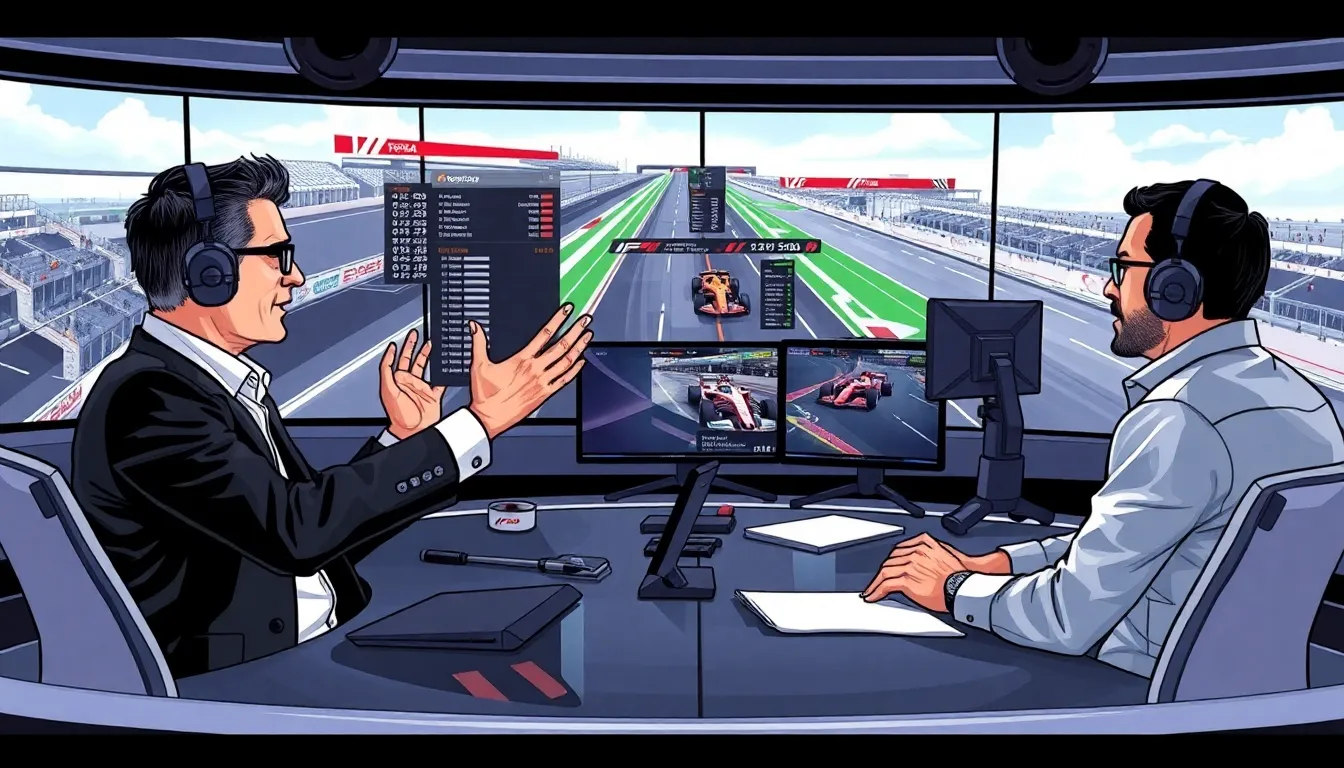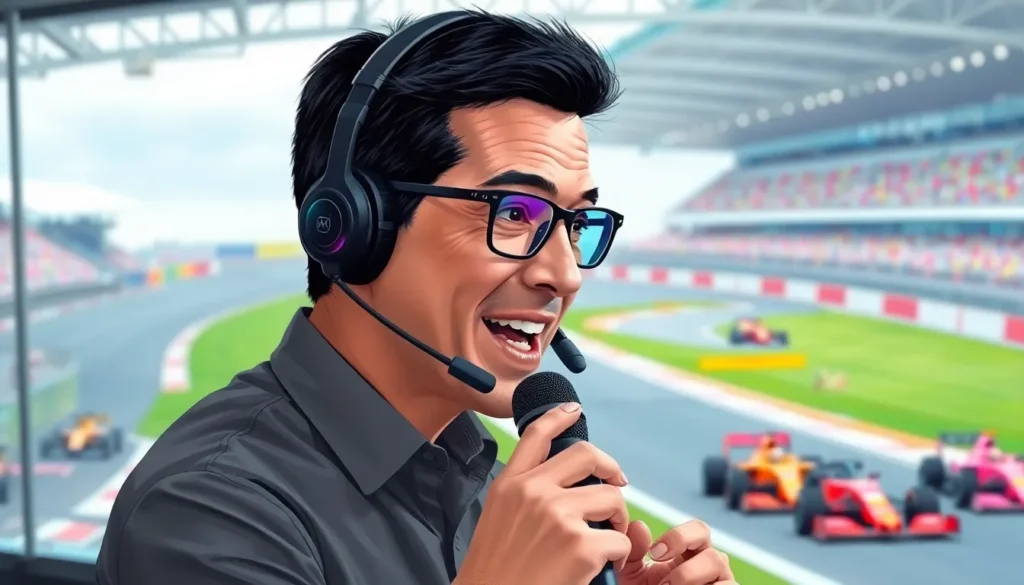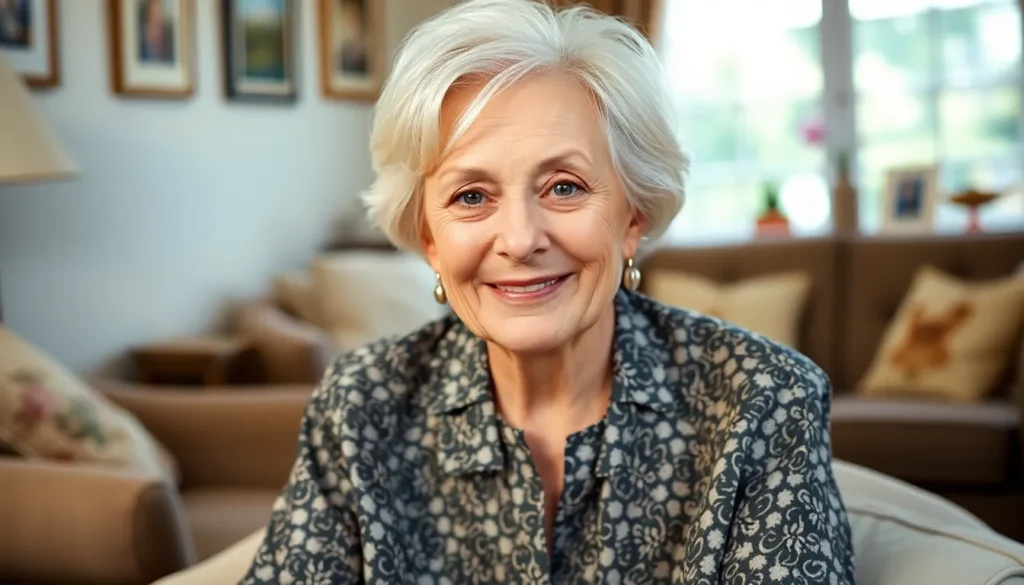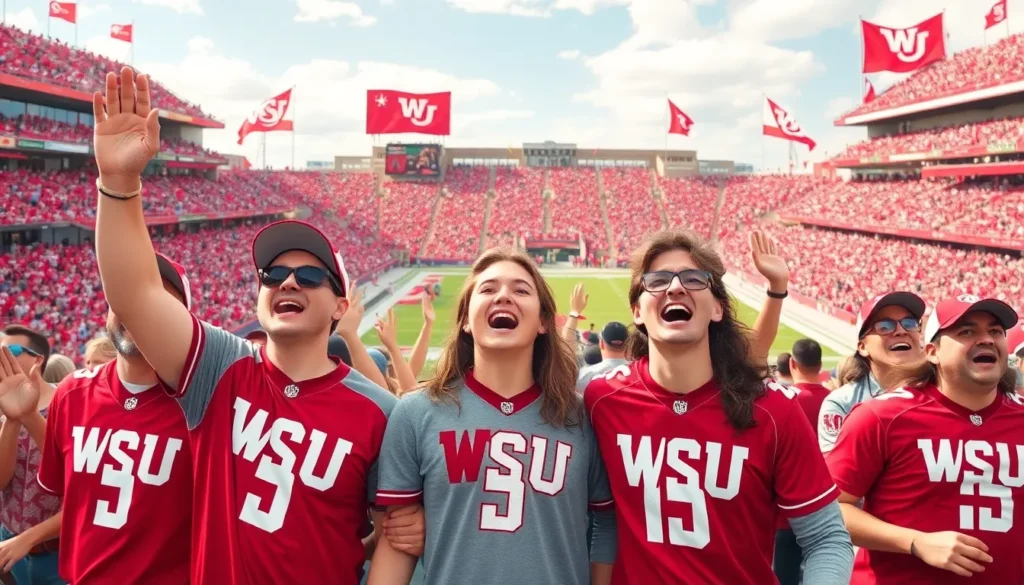When it comes to the adrenaline-fueled world of Formula 1, the action on the track is only half the thrill. The real magic often happens in the commentary booth, where F1 TV commentators bring races to life with their unique blend of insight, humor, and a dash of drama. These voices are the unsung heroes, guiding fans through high-speed chases and nail-biting overtakes, all while keeping the mood light enough to crack a smile—even during a rain-soaked Grand Prix.
From quirky anecdotes to expert analysis, these commentators have a knack for turning a simple race into an unforgettable experience. Whether it’s a thrilling last-lap showdown or a cheeky jab at a rival team, their commentary adds a layer of excitement that keeps fans glued to their screens. So buckle up as we dive into the colorful world of F1 TV commentators and discover what makes them the ultimate sidekicks to the high-octane action.
F1 TV Commentators
F1 TV commentators play an essential role in conveying the thrill of Formula 1 racing to audiences worldwide. These professionals bring a mix of technical expertise and engaging storytelling that captivates fans from start to finish. Expertise in motorsport analysis and a deep understanding of team dynamics enhance the commentary experience.
Commentators often include former drivers and seasoned journalists, ensuring fans benefit from firsthand insights. They highlight strategy, tire choices, and vehicle performance, providing viewers with context that enhances their understanding of the race. Through this lens, commentators add layers to the excitement, framing each moment within the larger narrative of the championship.
Diverse commentators bring unique perspectives to the races. Their individual styles resonate with different audiences, appealing to both die-hard fans and casual viewers. Humor and wit often punctuate race coverage, creating a lively atmosphere that keeps viewers engaged even during laps that might seem monotonous.
In addition to live commentary, these professionals offer post-race analysis and expert opinion segments. Many commentators participate in podcasts and online discussions, creating a multifaceted relationship with fans. This engagement creates an interactive experience, allowing fans to immerse themselves in the sport further.
Overall, F1 TV commentators contribute significantly to the racing experience. Their ability to narrate the unfolding drama of each race ensures that every moment is thrilling. Viewers benefit from their insights, whether it’s discussing a daring overtaking maneuver or analyzing team pit strategies.
Key Roles of F1 TV Commentators

F1 TV commentators play crucial roles in elevating the overall viewing experience. Their contributions include dynamic commentary, insightful analysis, and engaging storytelling.
Play-by-Play Commentary
Live race commentary delivers real-time updates during every lap. Commentators emphasize key moments such as overtakes, crashes, and pit stops. A skilled commentator paints a vivid picture of the action, allowing viewers to visualize the race’s intensity. At times, they use their personal experiences to enhance the narrative, adding depth to the excitement. Viewers appreciate diverse styles, as some prefer a more formal approach while others enjoy a casual tone. Each commentator’s unique delivery keeps fans on the edge of their seats throughout the thrilling spectacle of Formula 1 racing.
Analysis and Insights
In-depth analysis transforms raw race data into digestible insights. Commentators break down strategies, discussing tire choices and fuel management. Former drivers often lend valuable perspectives, drawing on their experiences to explain driver decisions. This analysis fosters a deeper understanding of the race’s complexities. Engaging discussions also touch on team dynamics, highlighting the rivalry and collaboration within teams. Fans benefit from hearing comparisons and stats that provide context to performances. Commentary not only entertains but also educates, enriching the connection between viewers and the sport.
Notable F1 TV Commentators
Numerous commentators play pivotal roles in the world of Formula 1. Their expertise and engaging presentations enhance the viewing experience for fans.
Current Commentators
Sky Sports F1 features Simon Lazenby, known for his insightful commentary and hosting abilities. Martin Brundle offers unique perspectives, drawing from his experience as a former driver. David Croft provides dynamic race commentary, effectively capturing the excitement of each event. Meanwhile, Natalie Pinkham engages audiences with her interviews and behind-the-scenes insights. These commentators enrich broadcasts, ensuring fans stay informed and entertained throughout every race.
Former Commentators
Murray Walker, a legendary figure in motorsport commentary, left a lasting legacy known for his enthusiastic style. He brought races to life and became a beloved voice for generations of fans. Another prominent commentator, James Allen, provided unique insights and served as a bridge between the viewers and the sport. His knowledge and passion resonated with audiences. Also noteworthy,Ted Kravitz added depth with his post-race analysis and contributions to team and driver narratives, captivating fans for years. Each of these former commentators has contributed to the evolution of F1 broadcasting and the sport itself.
The Evolution of F1 Commentary
F1 commentary has transformed significantly since the sport’s inception. Early broadcasts featured minimal analysis and focused primarily on the race itself. With technological advancements, commentators now incorporate real-time data to enhance the viewer experience.
New approaches emerged in the late 20th century as networks recognized the value of personality in commentary. Legendary figures like Murray Walker captivated audiences with their enthusiasm. His unique delivery and deep knowledge of the sport set a standard for future commentators.
As Formula 1 expanded globally, commentators adapted their styles to engage diverse audiences. Former drivers brought firsthand experience to the booth, improving the quality of insights provided. Their understanding of strategy and car performance helped demystify complex aspects of racing.
In recent years, the rise of digital media significantly reshaped F1 commentary. Fans now enjoy interactive experiences through social media platforms and online forums. Commentators participate in discussions, creating a sense of community around the sport.
Post-race analysis has also evolved, with experts like Ted Kravitz exploring team dynamics and narratives. His deep dives into race events connect viewers to the behind-the-scenes elements of F1. Engaging storytelling has become a hallmark of modern commentary.
The current landscape features a mix of seasoned professionals and fresh faces. Presenters like Simon Lazenby and David Croft blend humor with analysis, making broadcasts enjoyable. This mix ensures that F1 commentary remains relevant and captivating for all fans.
Conclusion
F1 TV commentators play an indispensable role in the world of motorsport. Their ability to blend technical knowledge with engaging storytelling elevates the viewing experience for fans everywhere. By offering real-time insights and captivating narratives, they ensure that each race is not just a competition but a thrilling spectacle.
As the landscape of Formula 1 continues to evolve, these commentators adapt, maintaining their relevance and connection with audiences. Whether through live commentary or post-race analysis, they foster a deeper appreciation for the sport. Ultimately, their contributions enrich the Formula 1 experience, making it accessible and exciting for everyone.



